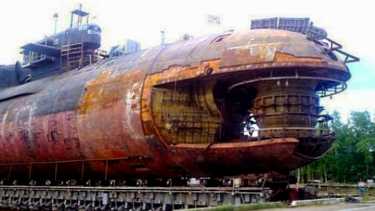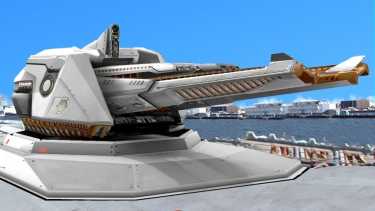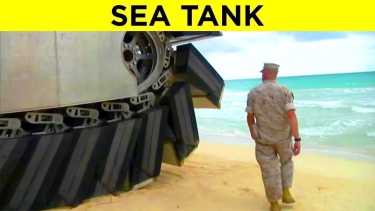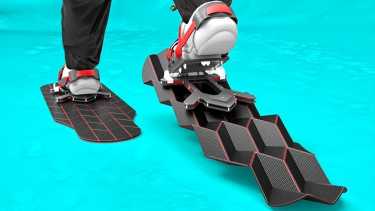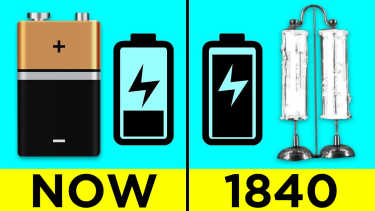Most Epic Transport Operations of All Time
Tune in for the most epic transport operations of all time!
TechnologyMankind will stop at nothing to build massive megastructures all over the world. But getting all the biggest parts to the right places is no easy feat. Have you ever considered how oil rigs make it to the middle of the ocean? Or how wind turbines make it to the windy tops of massive mountains and hills?
As big and impressive as some of these structures are, the scale of the transport operations they require are even more amazing! Let's take a look at some of the most massive and epic transport operations of all time.
A Lot of Bullwinkle
Out in the Gulf of Mexico, a gigantic 1,736 feet tall, pile-supported oil platform sits among the waves called Bullwinkle. But this part here is just 384 ft tall, meaning a massive 1,352 ft of it lay beneath the water, that’s a structure almost as tall as the empire state building!
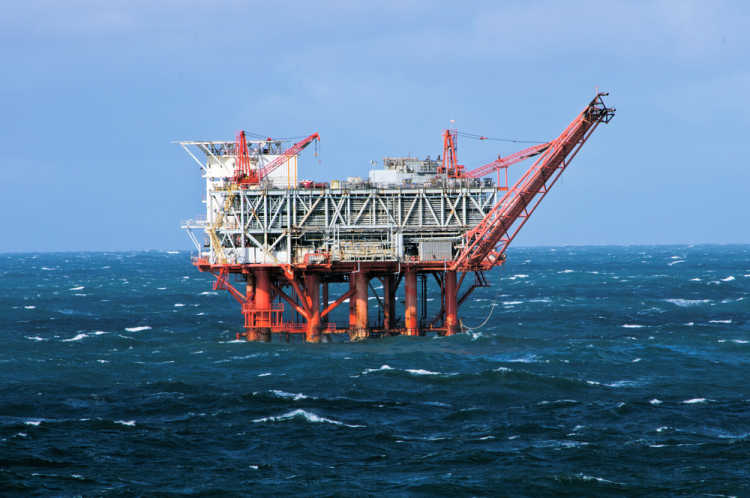
So, how on earth was something so big transported all the way out there? Well, let's rewind to 1988, just after construction of the jacket of this beast was completed over in Texas.
Made from 10 times the amount of steel used to make the Eiffel tower, the entire jacket weighed more than 50,000 tons, and was built lying on its side covering an area 4 ½ acres in size, that’s roughly the same as 3 ½ football fields! After 2 ½ years of construction, she was ready to ship!
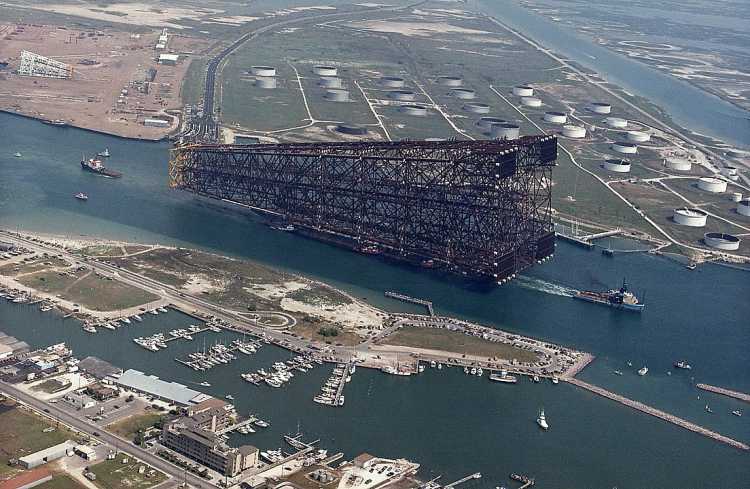
But being over 50,000 tons meant Bullwinkle required a custom-built barge to tow it to its destination. At 853 ft, it was the largest barge ever constructed, but even then, it took operators 5 grueling days to winch the jacket onto the barge inch by inch.
Finally, it was ready to make its journey from the tip of Texas, through the Corpus Christie ship channel, and over 380 miles off to the Gulf of Mexico.
Once it reached its destination, Bullwinkle was launched off the barge in less than 90 seconds and floated into position. Then, operators manually activated the hydraulics system, opening the flood valves, filling the hollow legs with water, and sinking Bullwinkle 1350 ft to its final position on the ocean floor.
The final deck sections were added to the 15 ft of visible framework poking above the water, and the operation was deemed a huge success. All up, the effort cost around $500 million, which is about $1.3 billion today!
Spectacular Spar Platform
As big as the Bullwinkle is, it’s got some hefty competition sailing over the horizon, literally! This is the Aasta Hansteen, the largest spar platform in the entire world.

Unlike the Bullwinkle’s design, spar platforms use a gigantic, buoyant cylinder to support a topside deck, which means they’re less affected by powerful winds, waves, and currents. At 164 ft in diameter and 656 ft long, this behemoth weighed in at more than 50,000 tons. For perspective, in length alone, this thing’s as long as the height of two statues of liberty stacked on top of one another!
At that size, and being oddly shaped, there was only one ship up to the task of transporting this rig 16,700 miles from its construction site in Korea to the oil fields of Norway: The Dockwise Vanguard.
Now owned by Boskalis, these semi-submersible heavy transport vessels are more than 900 ft long and almost 230 ft wide! And they’re able to carry up to 123,000 tons of cargo, thanks to a little trick hidden up their sleeves.
Their decks can drop almost 90 ft beneath the water’s surface, allowing them to scoot under super-heavy cargo and lift it aboard! And because it’s a bowless vessel, it can fit all manner of oddly shaped cargo on its deck, perfect for this incredibly angular load!
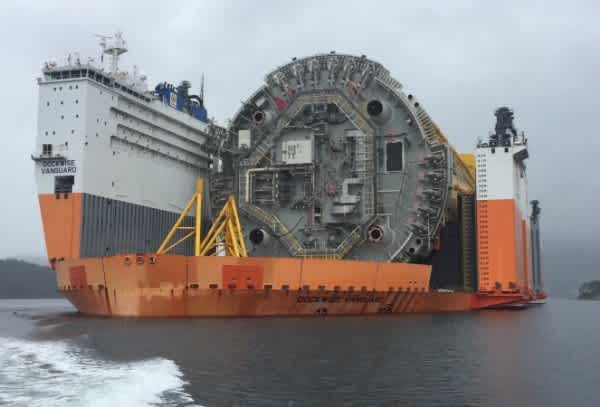
After nearly 2 months at sea, traveling at a top speed of just 15 mph, the Aasta reached its destination in the Norwegian fjords. From here, it was towed into position and filled with almost 11 million gallons of water to carefully sink it into place.
Big Blade Boat
If you’ve ever seen a wind turbine, it’s probably been from quite far away, making these renewable energy generators seem kinda small when they’re dotted over a hillside.
In reality though, these massive structures can reach over 250 ft high, making many of them taller than a 20-story building! And the specially designed blades attached to these towers aren’t small either!
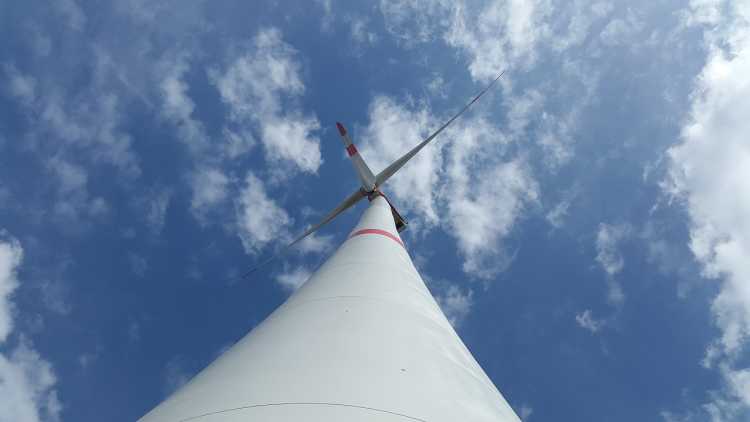
But considering components like these are often made in economic hubs like China, how is it they make it to windswept hills all over the world? For that, energy companies require the use of some tight packing, and some seriously big ships.
Back in 2019, energy company Vestas stacked a staggering 156 brand new V120 blades onto the Zhi Xian Zhi Xing heavy lift vessel, the largest ship in its class. With almost 65,000 sq. ft of loading space, the deck of this behemoth is larger than a standard soccer pitch!
Even with all that space, the V120’s required some inventive stacking, as each blade was a whopping 193 ft long and weighed in at a colossal 12 tons each. With blades this big and hefty, the loading process alone took a whole week to carry out! Only then could the ship begin its more than 11,500-mile journey to Ferrol, Spain.
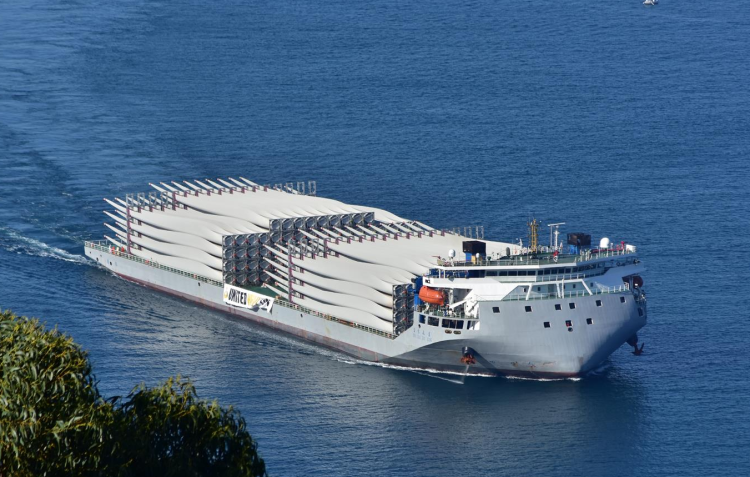
But to ensure its cargo remained stable and secure, it could only travel at a top speed of 10 knots, just 11 mph! This meant that while it set off on January 8th, the shipment didn’t arrive until mid-February! Now that’s what you call long-haul.
Blades Of Glory
So, we’ve established how wind turbine blades are transported overseas, but how do they make it up to the tops of hills, and even mountains?
Well, that’s where trusty, heavy haulage semi-trucks and extendable trailers come in. These trucks spread the weight of a single blade, all near 200 ft of it, on a separate trailer on the rear end, that can be connected by an extendable hydraulic spine.
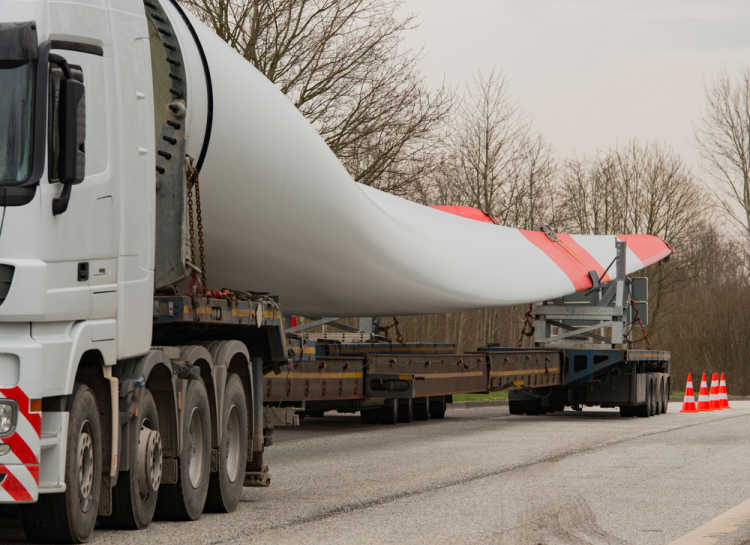
This seems like a fine method of transportation if your route is just one big straight line. So how do trucks with loads this long turn? And if they do, wont they be at risk of hitting trees or barriers on the roadside?
Don’t worry, it’s all been thought out. These routes require extensive planning, with trees, barriers, even lampposts being removed on specific corners before the blade’s transport takes place.
On top of that, the trailer at the back is self-steering, meaning that it follows the track of the truck around without needing to be piloted manually. Without the extra wheel axles in the middle, this allows trucks carrying the blades to make turns as tight as 90 degrees without fear of the back end driving off the road an into a ditch!
Plus, the hydraulic neck of most of these machines can be lifted, should the truck encounter any unmovable mid-lane objects! But what if the final destination is even harder to reach like, full of steep roads, cliffs, and hairpin turns?
That’s when Wind Blade Adaptor Trailers like these come into play. These trailers contain a hydraulic lift system which can rotate the blades up to 360° while on the road to adjust the center of gravity and sweeping area.

This means the blade’s position can be adapted to the route, reducing the amount of space the trucks need to turn, and raising over high obstacles like trees and houses. This design may initially seem less secure than the extendable trailers, but these blades here each weigh 88 tons, and are 172 ft long!
If that didn’t convince you, some Adaptor Trailer designs have been modified to carry blades as long as 230 ft and can still conquer the steep inclines and sharp turns of China’s amazing mountains.
This project, which took place in Hejin City, Shanxi Province, saw each of these 20-ton blades transported around 2 and a half miles of hairpin turns and up steep slopes, before reaching their destination around 3 hours later! They really made this entire operation look like a breeze.
Terrific Trailer Power Assist
Back in 2016, Heavy Lifting and Transport company Mammoet unveiled a brand-new heavy transport system that would change the face of heavy transport: the Trailer Power Assist. Their incredible simulations demonstrated how these huge, hydraulic power units and modified trailers would challenge conventional transport operations.
Instead of using multiple tractor trailers to haul particularly heavy loads, Mammoet proposed fitting Power Pack Units onto adapted trailers, which would hydraulically power 4 of the 6 axle lines.
Once running, each engine would generate a whopping 1,000 horsepower and a traction power of over 40 tons! This amount of moving power would eliminate the need for multiple trucks, while still being able to conquer tough inclines with a heavy load in tow!
Not only that, but because the power packs could be attached to separate trailers, longer loads could be supported on two separate trailers and maneuvered around tight corners!
That looks pretty amazing, but were they able to deliver such incredible technology? You know it! Built to withstand extreme climates, Trailer Power Assists can operate between temperatures of -40°F and 122°F and are now used all over the world.
Incredible Coke Drums
Ever heard of a coke drum before? No, it’s not where Coca Cola cook up their famous fizzy drinks.

Coke drums are gigantic vessels that use heat and pressure to refine complex hydrocarbons into lighter, more useful, products, such as gasoline. They’re used in oil refineries all over the world and, as you can probably imagine, moving them is no easy feat!
Back in 2006, four coke drums, each weighing a whopping 455 tons, had to be moved across Canada, using only suitable roadways, from Edmonton to Alberta.
Like travelling 480 miles with cargo that heavy wasn’t enough already, their transport window was also in winter, meaning they were contending with temperatures as low as -31°F! So, they’d be dealing with frosty roads and black ice as well.
But it was no problem for the guys over at Mammoet heavy lifting. The drums were transported in pairs aboard a convey system that was over 650 ft long, 32 ft wide, and 40 ft high.
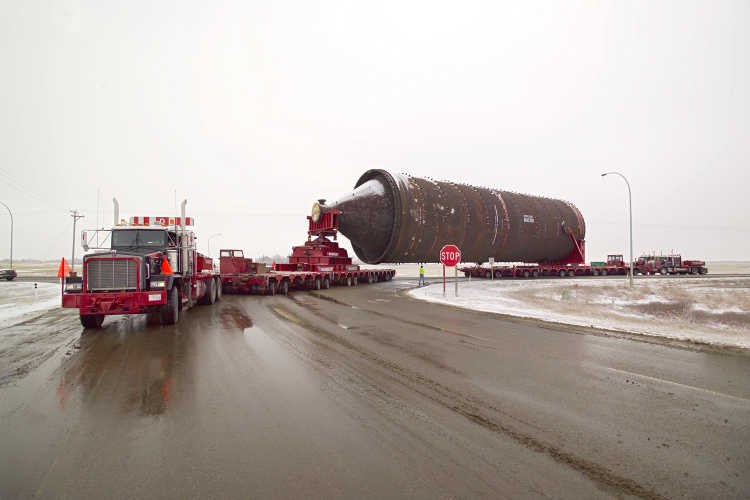
This meant a significant part of the job was to scout and prepare the road, with several utility companies lifting power lines, turning traffic lights, and controlling traffic. Traveling at less than 20 miles per hour, the two trucks covered the route in two-day intervals to limit the impact on highway traffic.
It was a grueling process, with a one-way trip taking 5 days, before the convoy returned for the second set of drums. Now that’s one hell of a round trip!
Mega Magnet
Scientists these days use some of the most advanced, and biggest, equipment out there to help us understand the world we live in, like the Muon G-2.
This particle physics experiment in Illinois manipulates magnetic forces to help uncover the existence of brand-new particles, but they’re not playing about with regular magnets! The Muon G-2 uses this colossal 50-ton electromagnet, which is a humungous 50 ft in diameter.
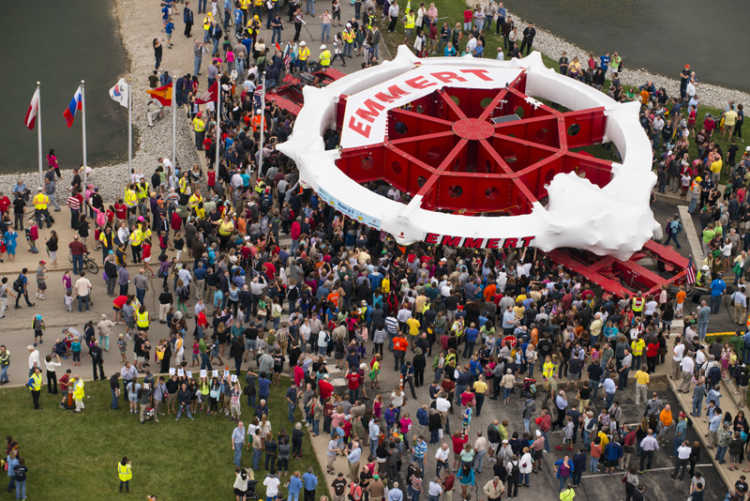
As huge as it looks, its move in 2013 came with an even bigger catch. It had been made and installed in the Brookhaven National Laboratory, New York, but the research was being continued in Illinois. And because the massive magnet was made as a single unit to give it an exceptionally symmetrical magnetic field, it couldn’t be broken apart for transport! Luckily, it was only going to Brookhaven, a mere 891 miles away.
Still, in the grand pursuit of science, it didn’t have too far to go right? Actually, they decided against having to vet and clear nearly 900 miles of road of obstacles like trees, lampposts, and decided it would be easier to make most of the journey by barge!
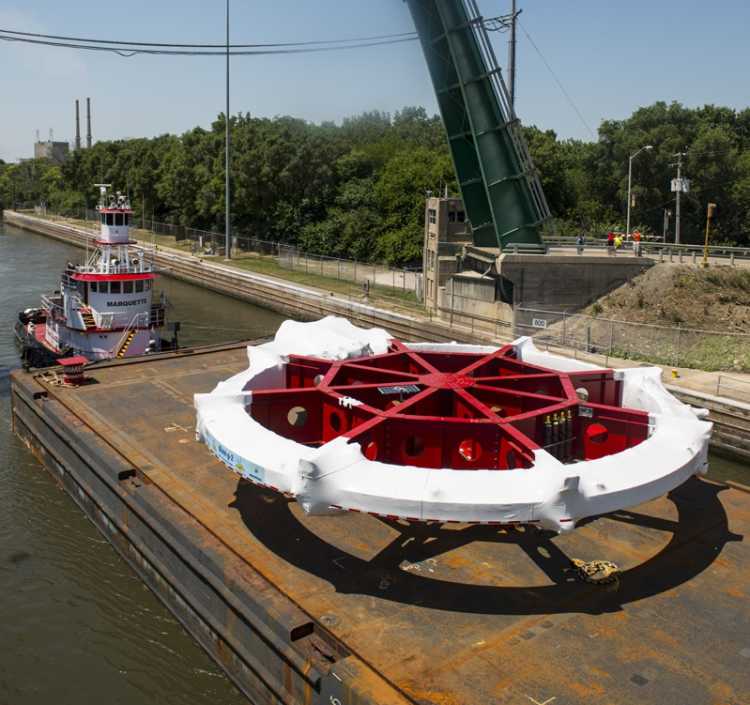
Though getting it to and from the ports still required some serious horsepower on both ends. Using a specially adapted flatbed truck and a 45-ton metal apparatus keeping the electromagnet as flat as possible, the magnet was carefully lifted on, and the journey was underway.
It took several days for the slow moving convey, which barely inched along at more than a few miles per hour, to get to Marina Port on Long Island. But, after making its 3200-mile journey around the US coast, up the Illinois river, navigating locks, dams, and then another stint on the road, it was mission complete.
And it had only taken 35 days! Even though it took quite a long time, you’ve got to admit, this entire operation to deliver one mega magnet looked pretty attractive.
The Nevada Beast
2020 was a really heavy year for a lot of people, what with the worldwide pandemic and all. And over in Nevada, it got even heavier but for a much cooler reason! On the 29th of June, this 770-ton behemoth was towed over Nevada’s desert highway.
Can you guess what it is? A giant jet engine? Maybe the biggest can of pringles ever made? It’s actually a decommissioned nuclear reactor! The vessel, from Southern California’s decommissioned San Onofre Nuclear Generating Station, was bound for burial at Clive, Utah; a remote site about 75 miles west of Salt Lake City.
But at that colossal weight, the 16 ½ ft diameter vessel needed a convoy nearly 300 ft long to transport it, distributing its weight so that it wouldn’t damage the asphalt roads. This was made up of not one, not 2, but 6 heavy duty tractor trucks, with 4 tractors pushing and 2 pulling via a series of interconnecting towbars.
The vessel itself was lifted onto a 48-axel, 192 tire trailer, bringing the overall convoy length to that amazing, aforementioned 300 ft! But speed wasn’t the name of the game here. Despite all those trucks generating over 4,000 horsepower, the convoy could only move at a top speed of 10 miles per hour to protect both the cargo and the roads.
Why wasn’t it just put on a train instead? Well, for part of its journey, it was. But the reactor was so big, rock outcroppings and two tunnels along the Union Pacific tracks made the full train journey for this beast impossible.
Well, I bet the residents of Nevada were glad. It’s not every day they get to use the excuse that they’re late to work because there was a nuclear reactor blocking the road!
The Big Merino
Australia is famous for many things: that fancy opera house, kangaroos, shrimp on the barbie, and, who could forget, this very big, boxy sculpture of a ram. This is the Big Merino, affectionately known by the locals of Goulburn, New South Wales, as “Rambo”.

Rambo is a 50 ft tall concrete Merino sheep who tips the scales at 106 tons. He was built back in 1985 as a monument to the district’s wool industry, made using a steel frame and wire mesh, which was sprayed and detailed with reinforced concrete.
However, in 2007, plans for the Goulburn bypass meant Rambo would need to be moved to greener pastures, about half a mile down the road, to be exact. But even though Rambo wasn’t going far, moving him wasn’t an easy task.
First, the concrete casing around Rambo’s steel legs was removed and cut, allowing a specially made steel frame to be jacked underneath him. This created enough space for a 93-ton transporter trailer and tractor unit to be reversed in under him. Then, his legs were welded to the trailer’s bed, and finally, after 2 ½ days of preparations, Rambo was on the move!
Even with more than 96 wheels and 620 horsepower, this truck needed to move at a snail’s pace to ensure the big ram didn’t topple over.
Fortunately, Rambo reached the new site without any issues, and once his legs were reinforced and embedded in concrete, he was ready to be refurbished and turned into a gift shop and display room.
Enormous Engine
The average car engine produces around 190 horsepower, and a standard tank engine generates roughly 1,500 horsepower. There’s a pretty sizable difference between the two, so when I tell you there’s an engine out there that produces almost 109,000 horsepower, can you imagine how big it is?
This is the Wärtsilä RT-flex96C, a diesel engine that, at its largest, weighs in at a staggering 2,300 tons, reaches 90 ft long, and is 44 ft tall, the same height as a 4-story building!
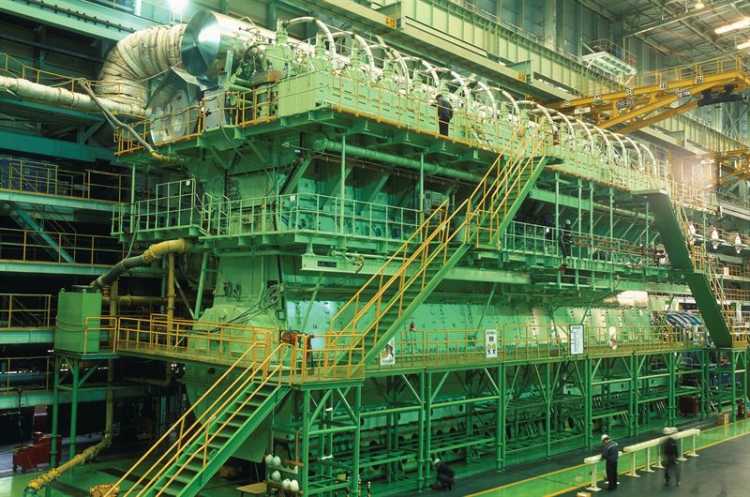
Each of its massive 14 cylinders guzzles up 6.5 ounces of diesel per cycle, which produces 5,700 kilowatts of energy. For those of us who have no idea what that means, one cycle from this engine could power all the electricity of an average US household for about half a year.
But this thing wasn’t made to power houses, it was designed to power large container ships that run on heavy fuel oil and use up to 250 tons of the stuff a day. But how are they transported from construction site to ship?
Well, the answer often comes in something with much less horsepower, usually a trailer tractor, shown in the image below carrying a much smaller version of the RT-flex96C that only contains 6 cylinders! But it still weighs roughly 1000 tons and requires a 28-axel modular transport system to shift it from A to B!
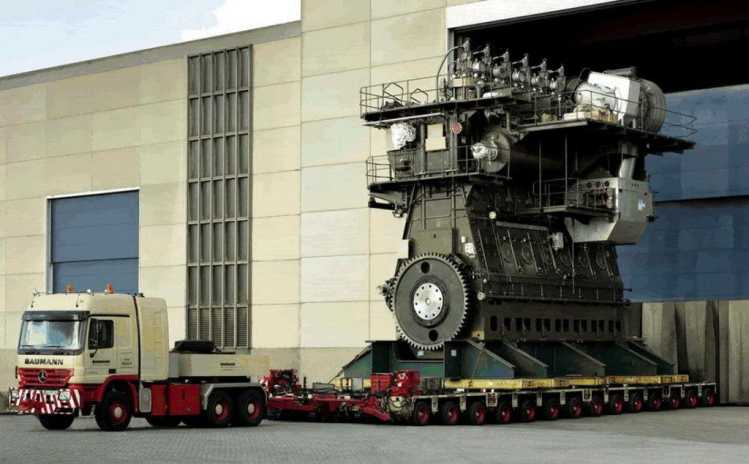
Slightly larger 8-cylinder versions are transported in the same way. However, the larger 12 to 14-cylinder engines are transported and installed in separate segments because they weigh so much! The sheer size and scale of this thing really puts evolution in revolution.
Disaster of the MV Sewol
On 16th April 2014, one of the deadliest ferry disasters in modern history unfolded on the shores of South Korea. The MV Sewol, a vehicle-passenger ferry traveling to Jeju Island, was carrying 472 passengers and crew when it made a sharp turn while battling a strong current, and catastrophically overturned in the water.
There were just 172 survivors, and, horrifically, 250 of those lost were schoolchildren. An investigation later uncovered that the ship had been illegally overloaded, with the amount of cargo packed on board breaching twice the legal limit, and most of it hadn’t been properly secured.
To compensate for this, the ferry had drained its ballast tanks, the water in which provides stability and maneuverability to vessels during a voyage. But they’d drained them so much, there was little over ¼ left of what they needed to provide adequate stability.
This was so the ferry wouldn’t appear to sit too low in the water to inspectors, but it had been illegally operating like this for years. So, when the ferry hit that tight turn that fateful day, the unsecured cargo shifted, throwing off the ferry’s already unstable center of gravity, and toppled the vessel.
Salvage operations eventually began 3 years later in 2017. The Sewol was thought to weigh around 13,000 tons including what remained of the cargo, but the mud that had gathered in it during that time increased its weight to a staggering 17,000 tons!
The ship was lying over 130 ft below the waves, so two huge barges were placed either side of it. Beams were installed by digging through the seabed underneath, and then cables were attached to drag it up.
Once two-thirds of the wreck was exposed, a semi-submersible vessel was positioned underneath to raise it out of the water and transport it to Mokpo port. Once there, a series of self-propelled modular transporters were waiting to transport the wreck further inland.
A 24-axel line transporter, made up of a total of 96 wheels all round, is pretty big. But the Sewol’s wreck required a mammoth 600 axle lines. That’s 2,400 wheels, with each axle line supporting more than 30 tons of weight. That made the MV Sewol the heaviest thing ever moved by this type of transporter!
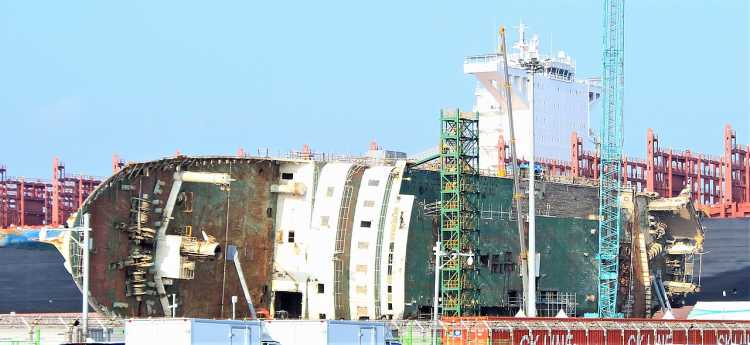
All up it took more than 8 days to lift the ferry from the seabed, and another 4 to get it to the dry dock. It’s not the longest transport operation in history, but it’s still big and horrifying enough to give me a sinking feeling.
Saturn V S-II
Now we’re about to jump back in time to 1967, right at the critical point of the Space Race. America was frantically funding and testing all manner of space projects, and one of these was the Saturn V. This was a three-stage American rocket used by NASA to support the Apollo program.

Because the proposed launch window for the Saturn V was so tight, tens of thousands of contractors had to supply the parts. These were all shipped to major centers in the US for inspection before being carted to Cape Kennedy for test-launch assembly.
In total, the Saturn V required 56 railroad tank cars to supply specific parts; it saw components spend 70 days traveling by sea; and flew in many more.
However, the Saturn V’s second stage, S-II, involved the transport of a very unusual object: the Common Bulkhead Test Tank, or the CBTT. It was 33 ft in diameter, 47 ft long, the largest of any of the bulkheads tested beforehand. And this made it something of a challenge to transport.
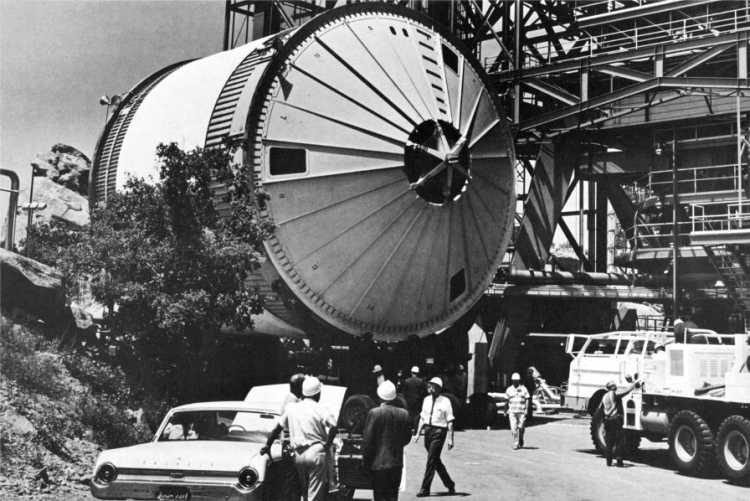
After it was completed at its Seal Beach facility, it needed to be transferred to the Santa Susana Field Laboratory. Usually, this would be a drive that’d take a car less than two hours.
But the 120 ft long custom-built transporter and its cargo, that was as wide as a 3-story building is tall, would have trouble avoiding overhead electric wiring, lampposts, and navigating the steeper sections of the route.
So, the CBTT was transported 1 ½ miles to Port Hueneme the open sea, traveling at less than 10 mph. From here, it was heaved onto a barge for another 60 miles at sea, and then a final 50-mile slog through Ventura County roads and California freeways to the laboratory!
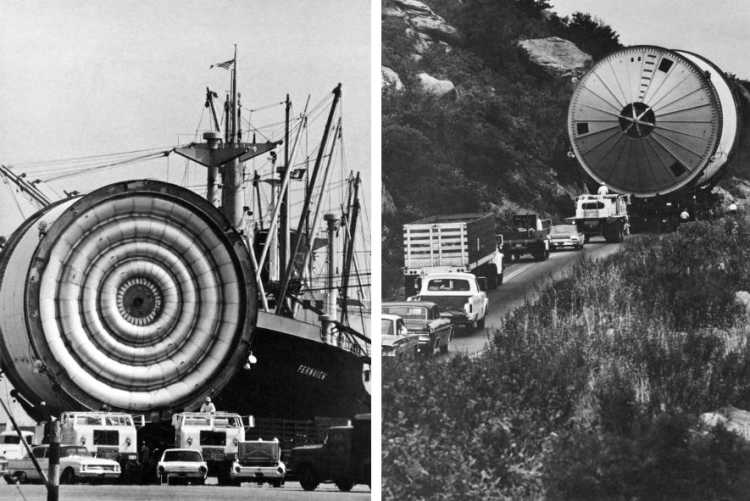
All up, the S-II’s transport endeavor took 3 days in total. It was one small drive for man, one very big journey for mankind!













![Embarrassingly Dumb Ways People Died - Darwin Awards Winners [Part 14]](http://images.ctfassets.net/l031eph9pzsg/686De1sLP59fCNWLkbDwm5/4031ad820164610867ececf9513ce5ce/embarrassingly-dumb-ways-people-died---darwin-awards-winners-_part-14_.jpg?w=750&h=422&fl=progressive&q=50&fm=jpg)



